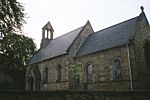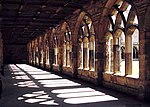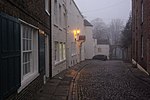St John's College, Durham

St John's College is a college of the University of Durham, United Kingdom. It is one of only two "recognised colleges" of the university, the other being St Chad's. This means that it is financially and constitutionally independent of the university and has a greater degree of administrative independence than the other, "maintained", colleges. However, to maintain its status as a recognised college, the university council must approve the appointment of its principal and be notified of changes to its constitution.St John's is Durham's second smallest college and comprises John's Hall for undergraduate and postgraduate students studying any university course and Cranmer Hall (named after Thomas Cranmer and with its own master or Warden), an Anglican theological college in the open evangelical tradition.
Excerpt from the Wikipedia article St John's College, Durham (License: CC BY-SA 3.0, Authors, Images).St John's College, Durham
Principal's Walk, Durham Viaduct
Geographical coordinates (GPS) Address External links Nearby Places Show on map
Geographical coordinates (GPS)
| Latitude | Longitude |
|---|---|
| N 54.7718825 ° | E -1.5757305 ° |
Address
St. John's College
Principal's Walk
DH1 3EE Durham, Viaduct
England, United Kingdom
Open on Google Maps









